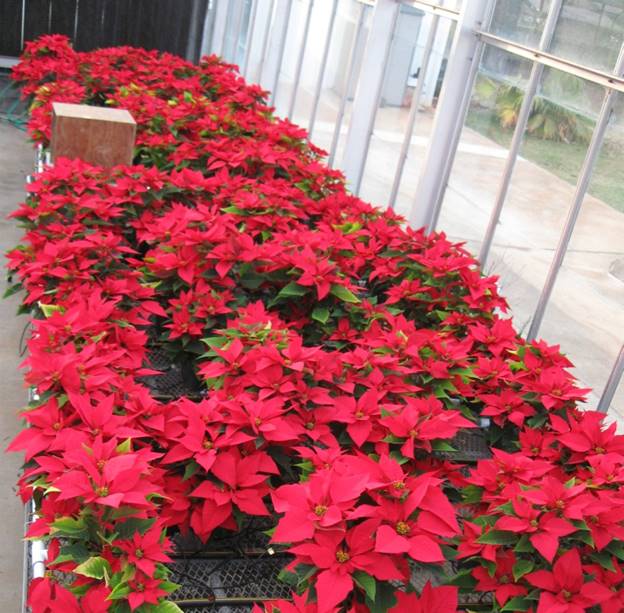Former PhD student Alem peter’s work on using a mild drought stress to control the height of poinsettias was published in the latest issue of HortScience: https://hortsci.ashspublications.org/content/50/4/565.full. Here’s the abstract:
Production of poinsettias (Euphorbia pulcherrima) often involves intensive use of plant growth retardants (PGRs) to regulate height. Height control is necessary for visual appeal and postharvest handling. Since PGRs do not always provide consistent height control and can have unwanted side effects, there is interest in alternative methods of height control. Since turgor potential drives cell expansion, and thus stem elongation, drought stress has potential for regulating plant height. Through soil moisture sensor-controlled irrigation, the severity of drought stress can be both monitored and controlled. The objective of our study was to compare poinsettia ‘Classic Red’ height control using PGRs (spray, mixture of daminozide and chlormequat at 1000 mg·L−1 each and drench, 0.25 mg·L−1 paclobutrazol) with the use of controlled water deficit (WD). Graphical tracking of plant height, using a final target height of 43.5 cm, was used to determine when to apply PGR or controlled WD. In the WD treatment, substrate volumetric water content (θ) was reduced from 0.40 to 0.20 m3·m−3 when actual height exceeded the expected height. PGR applications (spray or drench) reduced poinsettia height to 39 cm, below the final target level of 43.5 cm. WD resulted in a height of 44.5 cm, closest to the target height, while control plants were taller (49.4 cm). There was no effect of PGR drenches or WD on bract size, while spraying PGR reduced bract size by ≈ 40%. Bract chroma was unaffected by WD or PGR treatments. There was no difference in shoot dry weight between PGR- and WD-treated plants. Lateral growth was reduced by the PGR treatments, but not by WD. These results indicate that controlled WD can be used to regulate poinsettia height.
